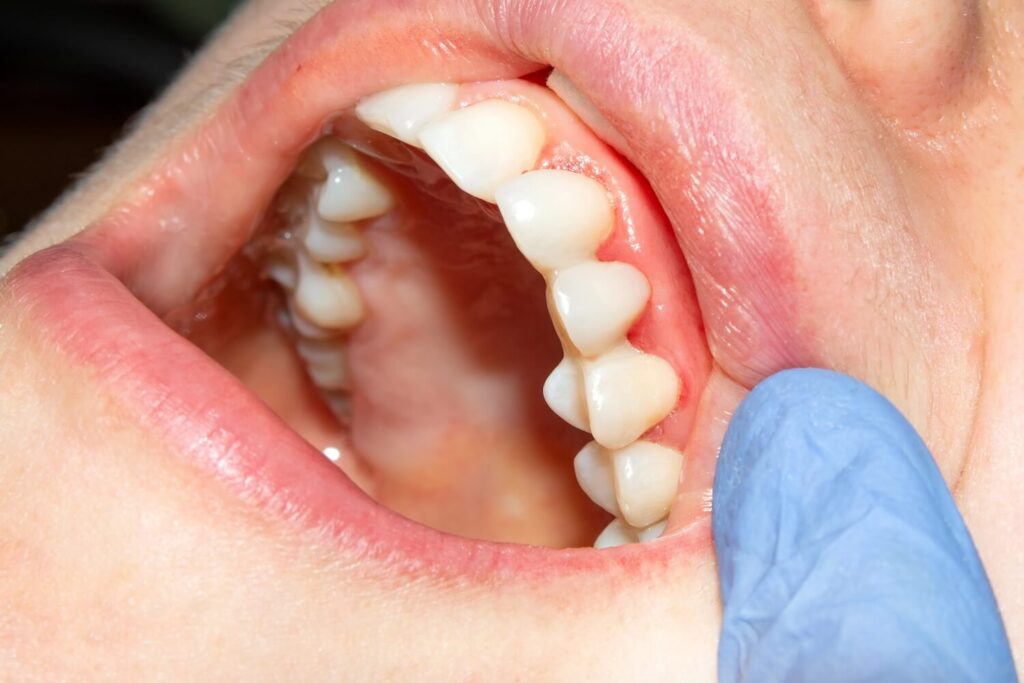Dental fillings are essential in modern dentistry, serving to restore teeth that have been affected by decay, cracks, or other types of damage. Whether you’re dealing with a small cavity or a more extensive tooth repair, dental fillings are crucial in restoring both function and appearance to your teeth.
There are numerous options available when it comes to choosing the right filling material, each with distinct advantages and disadvantages. From traditional amalgam fillings to advanced porcelain and composite materials, the choice of filling depends on a range of factors including aesthetics, durability, cost, and the location of the cavity. With so many choices available, it can be challenging to understand which option is best for your specific needs.
In this comprehensive guide, we will dive deep into the various types of dental fillings, their benefits, potential drawbacks, and considerations to help you make an informed decision about which type is right for you.
What Are Dental Fillings?
Dental fillings are used to restore teeth that have been damaged by cavities, cracks, or wear. When your dentist detects tooth decay, they will remove the decayed portion of the tooth and replace it with a material that restores the tooth’s structure, function, and integrity.
In the past, fillings were primarily made of amalgam (silver fillings), but advances in dental technology have introduced several new options that are more aesthetically pleasing and offer enhanced durability. Choosing the right material for your dental filling can depend on many factors, including your personal preference, the size and location of the cavity, and your budget.
The types of fillings that you can choose from include:
- Amalgam Fillings (Silver Fillings)
- Composite Resin Fillings (Tooth-Colored Fillings)
- Porcelain Fillings (Inlays and Onlays)
- Gold Fillings
- Resilon (Root Canal Fillings)
- Glass Ionomer Fillings
- Ceramic Fillings
Each type has unique properties that cater to different dental needs and personal preferences. To better understand your options, let’s take a closer look at each one.
1. Amalgam Fillings (Silver Fillings)
Amalgam fillings are one of the most widely recognized and affordable types of dental fillings. These are composed of a mixture of metals, primarily silver, mercury, tin, and copper. Amalgam has been used for more than a century due to its durability and strength. The material is applied as a putty, which hardens in the cavity to form a solid filling.
Advantages of Amalgam Fillings:
- Durability: Amalgam fillings are extremely durable and capable of withstanding the immense pressure from chewing. They are an ideal choice for large cavities in the back teeth where force from chewing is greatest.
- Cost-Effective: Amalgam is typically the most affordable filling material, making it an attractive option for patients on a budget.
- Long-Lasting: These fillings are known to last for 10-15 years or more, making them a very reliable choice for long-term dental restoration.
- Strong Resistance to Wear and Tear: Amalgam fillings can resist wear from chewing and grinding, which is particularly beneficial for patients with bruxism (teeth grinding).
Disadvantages of Amalgam Fillings:
- Appearance: Amalgam fillings are not aesthetically pleasing as they are silver or metallic in color, making them visible when talking, smiling, or eating. For patients concerned about the appearance of their fillings, amalgam may not be the best option.
- Mercury Content: Although amalgam fillings contain a small amount of mercury, the American Dental Association (ADA) and the U.S. Food and Drug Administration (FDA) maintain that amalgam fillings are safe for most patients. However, some people may have concerns regarding the potential effects of mercury exposure.
- Potential for Expansion: Amalgam fillings may expand and contract due to changes in temperature, which could cause the surrounding tooth to crack over time.
Best for:
- Large cavities in the back teeth (molars and premolars).
- Budget-conscious individuals looking for a cost-effective and durable solution.
2. Composite Resin Fillings (Tooth-Colored Fillings)
Composite resin fillings are made from a blend of plastic resins and fine glass particles. These fillings are customizable to closely match the color of the natural tooth, making them ideal for patients who prioritize aesthetics. Composite fillings can be molded to fit the shape of the cavity and are hardened using a special curing light.
Advantages of Composite Resin Fillings:
- Aesthetic Appeal: Composite fillings blend well with natural teeth due to their tooth-like appearance. They are often chosen for visible cavities in the front teeth or areas that are visible when smiling.
- Bonding Strength: Composite resin adheres to the tooth structure, creating a strong bond that helps to support the remaining natural tooth. This reduces the likelihood of future cracks or fractures.
- Conservative Approach: Composite fillings require less tooth removal compared to amalgam fillings. The filling can be layered in small amounts, preserving more of the natural tooth structure.
- Minimal Sensitivity: Composite resins typically cause less post-operative sensitivity than other materials.
Disadvantages of Composite Resin Fillings:
- Less Durability: Composite fillings are more prone to wear and tear compared to amalgam, porcelain, or gold. They may need to be replaced every 5-10 years, especially in areas of high chewing pressure.
- Staining: While composite fillings resist staining better than amalgam, they are more susceptible to discoloration over time compared to porcelain.
- Cost: Composite resin fillings are typically more expensive than amalgam, but they tend to be more affordable than gold or porcelain fillings.
Best for:
- Small to medium-sized cavities, especially in visible areas (front teeth).
- Patients who value aesthetics and want a natural-looking filling.
- Individuals who need a filling that bonds well with the tooth structure.
3. Porcelain Fillings (Inlays and Onlays)
Porcelain fillings, also known as dental inlays and onlays, are custom-made to fit the specific shape of your cavity. Porcelain offers superior durability and is an excellent choice for patients who prioritize both aesthetics and functionality.
Advantages of Porcelain Fillings:
- Aesthetic Appeal: Porcelain fillings are virtually indistinguishable from natural teeth. They can be carefully color-matched to blend seamlessly with your existing tooth color.
- Durability and Longevity: Porcelain fillings are strong and long-lasting, providing durability that is comparable to gold. They are ideal for large cavities in both the front and back teeth.
- Stain Resistance: Porcelain is resistant to staining, ensuring that your fillings will maintain their natural appearance over time.
- Conservative Treatment: The process of placing porcelain inlays or onlays requires less removal of healthy tooth structure compared to full dental crowns.
Disadvantages of Porcelain Fillings:
- Cost: Porcelain fillings are among the most expensive options available. The price is justified by the high-quality material and the custom fabrication required.
- Potential for Chipping: While porcelain is durable, it can be more prone to chipping or cracking if exposed to significant pressure or trauma.
- Multiple Visits: Porcelain fillings typically require two dental visits—one for taking impressions and creating the restoration, and a second for placement.
Best for:
- Medium to large cavities in visible or high-pressure areas.
- Patients seeking both durability and an aesthetic result.
- Those willing to invest in long-lasting restorations.
4. Gold Fillings
Gold fillings are considered one of the most durable and reliable options for dental restorations. They are made from a mixture of gold, copper, and other metals. Gold has been used in dentistry for centuries due to its strength and biocompatibility.
Advantages of Gold Fillings:
- Extreme Durability: Gold fillings are highly durable and can last for 20 years or more with proper care. They are ideal for large cavities or areas subject to heavy chewing.
- Biocompatibility: Gold is biocompatible, meaning it is unlikely to cause an allergic reaction or irritation in the gums.
- Resistance to Wear: Gold is highly resistant to wear and tear, making it an excellent option for individuals who grind their teeth or have bruxism.
Disadvantages of Gold Fillings:
- Aesthetic Concerns: Gold fillings are very visible, making them unsuitable for cavities in the front teeth or areas that are visible when you smile.
- Cost: Gold fillings are expensive compared to other types of fillings due to the high cost of the material and the custom fabrication required.
- Multiple Visits: Like porcelain fillings, gold fillings require at least two visits to the dentist—one for impressions and one for placement.
Best for:
- Large cavities in the back teeth (molars).
- Individuals seeking a long-lasting, highly durable solution.
- People who are less concerned with aesthetics in non-visible areas.
5. Resilon (Root Canal Fillings)
Resilon is a modern alternative to traditional root canal filling materials, such as gutta-percha. It is a thermoplastic material used to seal the root canals of a tooth after the pulp has been removed during a root canal procedure.
Advantages of Resilon Fillings:
- Superior Sealing Ability: Resilon provides an excellent seal for the root canal, preventing future infection and enhancing the long-term success of the root canal treatment.
- Biocompatibility: Resilon is highly biocompatible, reducing the risk of inflammation or irritation within the tooth.
- Radiopacity: Resilon is radiopaque, meaning it shows up clearly on X-rays, helping your dentist monitor the success of the root canal treatment.
Disadvantages of Resilon Fillings:
- Availability: Resilon is not as widely available as traditional root canal materials, so some dental practices may not offer it.
- Cost: Resilon is more expensive than gutta-percha and may not be covered by all insurance plans.
Best for:
- Root canal treatments requiring a durable and reliable filling solution.
Conclusion: Finding the Right Filling for Your Needs
Choosing the right dental filling is an important decision that directly impacts the long-term health and appearance of your teeth. Each type of filling material has its own unique set of advantages and drawbacks, making it essential to consider factors such as the location and size of the cavity, your personal preferences, and your budget when making your choice.
Whether you prioritize durability, aesthetic appeal, or cost, there is a filling option that suits your needs. For patients with large cavities or those who prioritize long-lasting materials, gold fillings and amalgam fillings may be the ideal solution. On the other hand, for those seeking a natural appearance, composite resin fillings and porcelain inlays or onlays provide an excellent aesthetic result without compromising strength.
If you are dealing with a root canal, Resilon offers a reliable, biocompatible option to ensure the success of your treatment. Meanwhile, for those looking for an affordable yet reliable option, amalgam fillings remain a trusted choice for large, back teeth cavities.
Ultimately, the best dental filling for you depends on your unique circumstances, and your dentist is your best resource for helping you navigate your options. By working closely with your dentist, you can make an informed decision that enhances your smile, restores your tooth’s function, and fits your budget.
Remember, no matter which type of dental filling you choose, the key to maintaining your oral health is regular dental check-ups and good oral hygiene practices. With the right filling and a commitment to your oral care, you can enjoy a healthy, confident smile for years to come.


